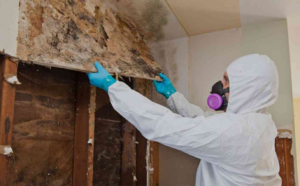Land Clearing involves removing debris, overgrown weeds, and trees from lots and properties. This helps create a smooth surface that is conducive to construction, agriculture, and landscaping.

Additionally, clearing dead plants and bushes reduces fire hazards by creating natural firebreaks and eliminating a buildup of dry twigs and leaves. It also prevents airborne diseases that can be spread by winds to nearby vegetation.
When a plot of land is cluttered with weeds, tree stumps, and other debris, it can be difficult to navigate the property. A professional land clearing company can assess the property and determine the best way to clear the site to improve access and safety. This process can include various steps, such as removing large trees, brush clearing, and stump grinding to remove all remnants of vegetation. The resulting land can be used for construction, farming, and other purposes.
In addition to promoting access and safety, clearing land can help improve the overall appearance of a property. Overgrown vegetation can block sunlight and create shadows, which can make the area less attractive. A professional land clearing service can remove all weeds and invasive plants, allowing the sun to reach all areas of the property. This can also make the property look more appealing and increase its value.
Overgrown vegetation is also a fire risk, especially in dry conditions. Dead trees and overgrown weeds can easily catch fire, which can quickly spread to nearby buildings or structures. Regular clearing of the area can reduce the risk of wildfires, keeping people and animals safe.
Land clearing can also help in the growth of desirable plants and trees. When a plot is overcrowded with vegetation, it promotes weeds and other unwanted growth, which can lead to soil erosion. This can be costly and affect the health of the plants. Land clearing helps to eliminate weeds and other undesirable growth and redistributes the soil evenly, making it healthier.
As cities and towns expand, it becomes necessary to clear land for new residential, commercial, and industrial developments. Professional land clearing services can prepare land for future construction projects by removing obstacles and improving drainage. This includes removing trees and grading the ground to ensure proper drainage. It can also involve removing surface and subsurface materials that may interfere with construction.
Proper clearing of land can also improve wildlife habitats by removing invasive species and encouraging healthy ecosystems. It can also be used to manage pests and diseases in agricultural settings, which can boost productivity and prevent damage to crops.
Enhanced Aesthetics
Whether it’s for a commercial project or your own personal property, land clearing is a great way to enhance the curb appeal of your property. This process involves removing a variety of trees, brush, and other vegetation to create an open, attractive space that can be used for landscaping, building, or farming.
Taking the time to clear overgrown areas of your property can make it more appealing and increase its value. This is because it can provide a better view of your house or building, as well as the surrounding landscape and any features you’ve added to the yard.
In addition to its aesthetic benefits, land clearing can also help improve the soil on your property. Overgrown plants can deplete the soil of its nutrients. This is because they compete with other plants for sunlight and water. By removing unwanted vegetation and underbrush, you can free up the space for new landscaping plants that will enrich the soil.
It’s important to hire a professional to perform land clearing services. They will be able to take into account your specific needs and the surrounding ecosystem when determining which trees should be removed and where. In addition, they will have the equipment necessary to safely and effectively remove all of the debris from your property.
Another benefit of land clearing is that it can help to reduce the risk of fire outbreaks in overgrown areas. Overgrown shrubs, bushes, and other vegetation can easily catch fire and become dangerous during a wildfire. By removing dead or dying vegetation, you can reduce the risk of fire and ensure that your land is safe for use.
There are many reasons why land clearing is essential for preparing a piece of land for construction projects, agriculture, or landscaping. It helps to reduce the risk of injury and damage during construction, improves the safety of workers and the general public, and can even boost your property’s value. By understanding the importance of this process, you can make sure that your next development or landscaping project is a success.
Reduced Risk of Pests and Diseases
Land clearing can reduce the risk of pests and diseases on the property. Overgrown vegetation attracts insects and other unwanted animals that can harm people and property, especially if the land is used for commercial or residential purposes.
Performing land clearing gets rid of mosquitoes, gnats, termites and other pests that thrive in dense areas and can become dangerous over time. Rodents and snakes also make their homes in these areas, and rotting trees and plants can harbor pathogens that cause disease.
When performed correctly, land clearing can be an excellent tool for environmental stewardship. Responsible clearing practices prevent erosion, improve soil quality, reduce the risk of wildfires and help maintain a balance between ecosystems.
Clearing involves the removal of brush, trees, stumps and other debris from an area of land. This process may be done manually using hand tools or mechanically with machinery such as bulldozers, backhoes and chainsaws. Herbicides can also be used to kill invasive species and other unwanted plants. The use of herbicides must be handled carefully to avoid environmental contamination.
The goal of land clearing is to remove the plant material that isn’t needed or wanted, making it easier to work on the ground or for a machine to pass over it. It can also be used to promote the growth of crops, improve pastures for livestock and create a safer environment for wildlife.
While some people are quick to pass judgment on the practice of land clearing, it is a vital part of the natural environment and has many benefits. When conducted responsibly, and with adherence to environmental regulations, land clearing can enhance the beauty of any property, reduce the risk of fire hazards, protect water quality and provide a safer environment for people, animals and plants.
Before starting land clearing, it is crucial to secure the necessary permits and clearances to ensure compliance with local zoning and environmental regulations. A professional land clearing company can help you navigate this process and ensure that the work is completed to the highest standards. They can also advise on best practices and methods for sustainable land clearing.
Increased Value
If your property is overrun by vegetation, it may be time to get it cleared. Whether you want to build a home or start a farm, clearing the land can help make it more functional. Additionally, it can increase the value of your property. The reason for this is because clear lots are more attractive and can be used in a number of ways.
Many people choose to hire a professional to perform their land clearing service, especially when it comes to clearing large areas of land. This is because a professional will be able to do the job much faster and more efficiently than someone who attempts to tackle the task on their own. Additionally, the professional will know what needs to be done and how to do it safely.
Land clearing can be a time-consuming process, but it’s well worth the effort in the end. It’s best to divide the land clearing project into manageable sections and work on each section at a time. This will help you stay on track and avoid any delays during the project.
In addition to making your property more aesthetically pleasing, clearing your land can also help reduce the risk of pests. Insects and rodents are often attracted to overgrown areas where they can hide out and build nests. These areas can also be a fire hazard, as the dense vegetation fuels wildfires. Land clearing removes the dead vegetation and rotting tree stumps that can pose a threat to the surrounding area.
Another reason for land clearing is to prepare the area for a development project, such as a housing construction project or commercial building. It can be very difficult to build on a lot that’s overgrown with vegetation, and clearing the land allows contractors to begin work without any delays. The same goes for farming, as clearing the land can allow farmers to grow more crops and expand their operations.








